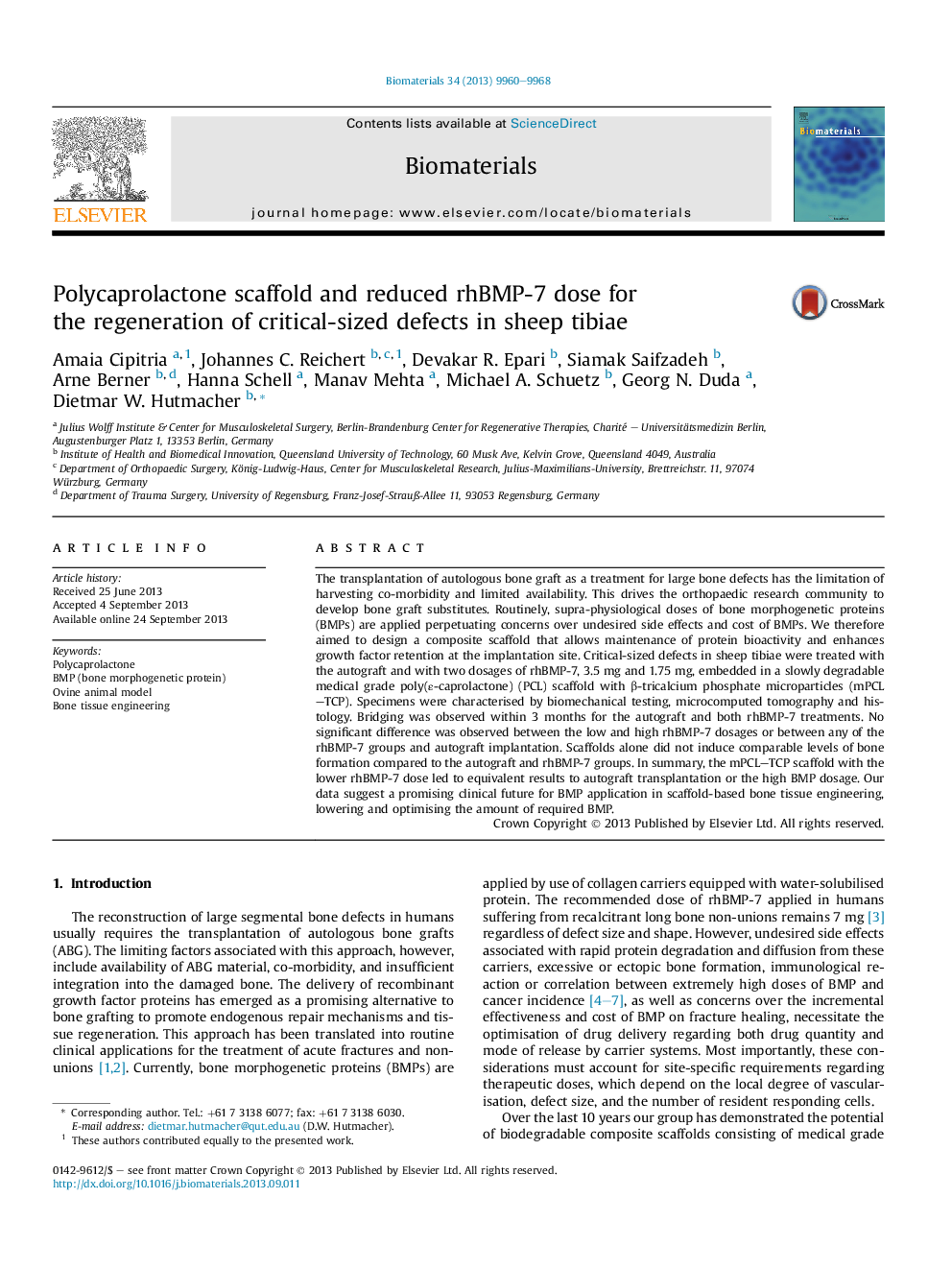| Article ID | Journal | Published Year | Pages | File Type |
|---|---|---|---|---|
| 10228119 | Biomaterials | 2013 | 9 Pages |
Abstract
The transplantation of autologous bone graft as a treatment for large bone defects has the limitation of harvesting co-morbidity and limited availability. This drives the orthopaedic research community to develop bone graft substitutes. Routinely, supra-physiological doses of bone morphogenetic proteins (BMPs) are applied perpetuating concerns over undesired side effects and cost of BMPs. We therefore aimed to design a composite scaffold that allows maintenance of protein bioactivity and enhances growth factor retention at the implantation site. Critical-sized defects in sheep tibiae were treated with the autograft and with two dosages of rhBMP-7, 3.5 mg and 1.75 mg, embedded in a slowly degradable medical grade poly(ε-caprolactone) (PCL) scaffold with β-tricalcium phosphate microparticles (mPCL-TCP). Specimens were characterised by biomechanical testing, microcomputed tomography and histology. Bridging was observed within 3 months for the autograft and both rhBMP-7 treatments. No significant difference was observed between the low and high rhBMP-7 dosages or between any of the rhBMP-7 groups and autograft implantation. Scaffolds alone did not induce comparable levels of bone formation compared to the autograft and rhBMP-7 groups. In summary, the mPCL-TCP scaffold with the lower rhBMP-7 dose led to equivalent results to autograft transplantation or the high BMP dosage. Our data suggest a promising clinical future for BMP application in scaffold-based bone tissue engineering, lowering and optimising the amount of required BMP.
Related Topics
Physical Sciences and Engineering
Chemical Engineering
Bioengineering
Authors
Amaia Cipitria, Johannes C. Reichert, Devakar R. Epari, Siamak Saifzadeh, Arne Berner, Hanna Schell, Manav Mehta, Michael A. Schuetz, Georg N. Duda, Dietmar W. Hutmacher,
